People
Sample research highlights on high-heat-flux thermal management, microgravity transport phenomena, and Stirling cycle-based energy conversion can be found here.
We are grateful to NASA, NSF, DOE, Nuclear Power Institute, American Science & Technology, Inc., and UNT for sponsoring our current and past projects.
High-Heat-Flux Thermal Management
- The TML performs phase-change heat transfer based research towards relevant thermal management technologies and applications, particularly for computing, power electrionics, and electro-optics.
- Current research areas include:
- Immersion cooling
- Spray cooling
- Enhanced heat transfer surfaces
- Enhanced heat spreaders
- Important criteria:
- High heat trasfer coefficient (HTC)
- High critical heat flux(CHF)
- Uniform temperature distribution
- Compact, lightweight, every efficient designs
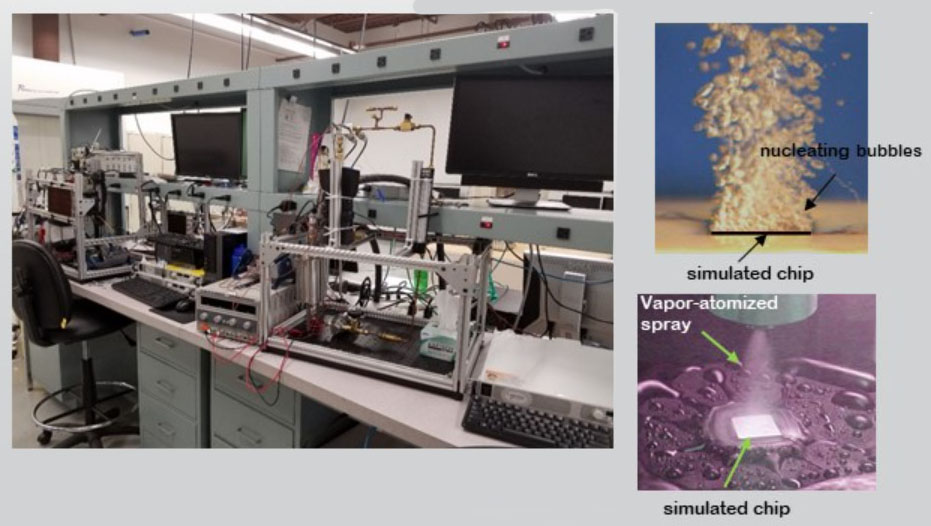
Two-Phase Immersion Cooling
- Two-phase immersion cooling of ARM-based computer clusters
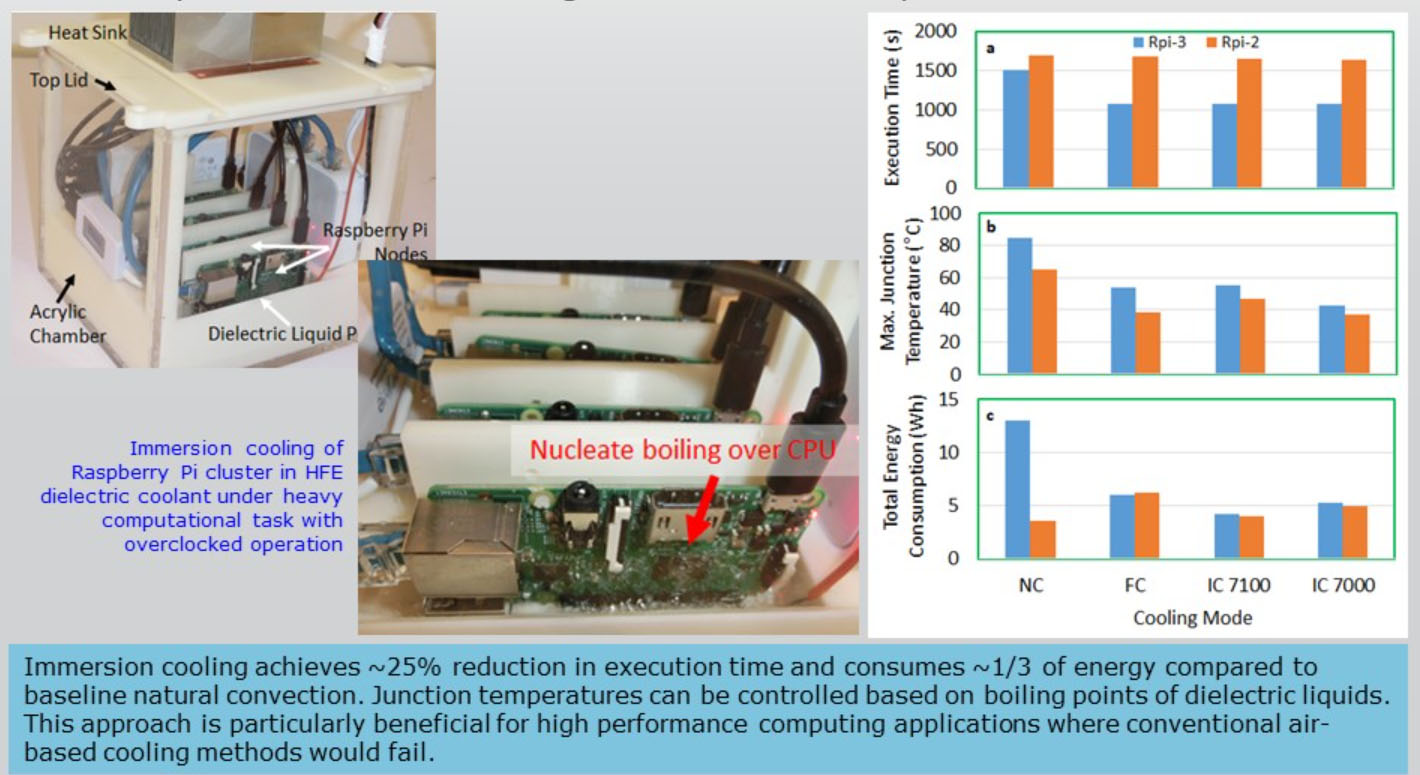
- Nucleate boiling of dielectric liquids on hydrophilic/hydrophobic surfaces
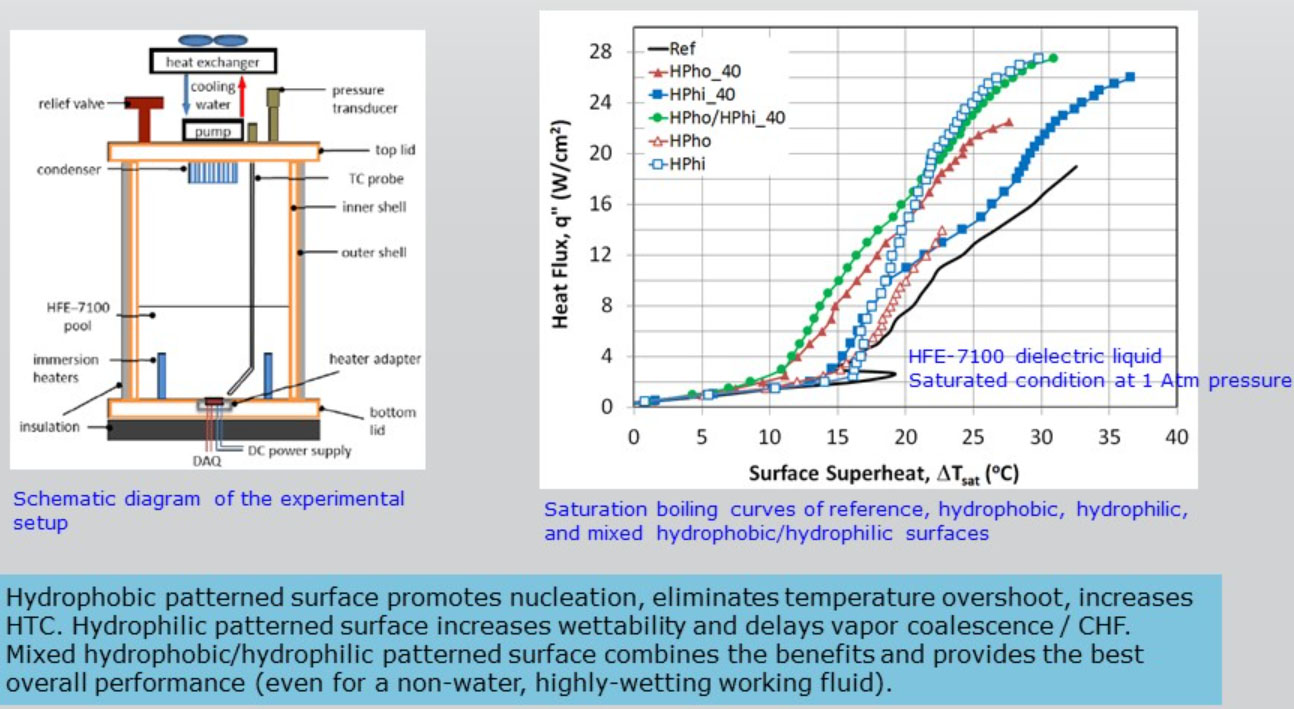
Two-Phase Spray Cooling on Enhanced Surfaces
- Two-phase spray cooling with ammonia on multi-scale microstructured surfaces
- Achived very high HTC and CHF at low (room) temperature operation
- Targeted for thermal management of high power laser systems
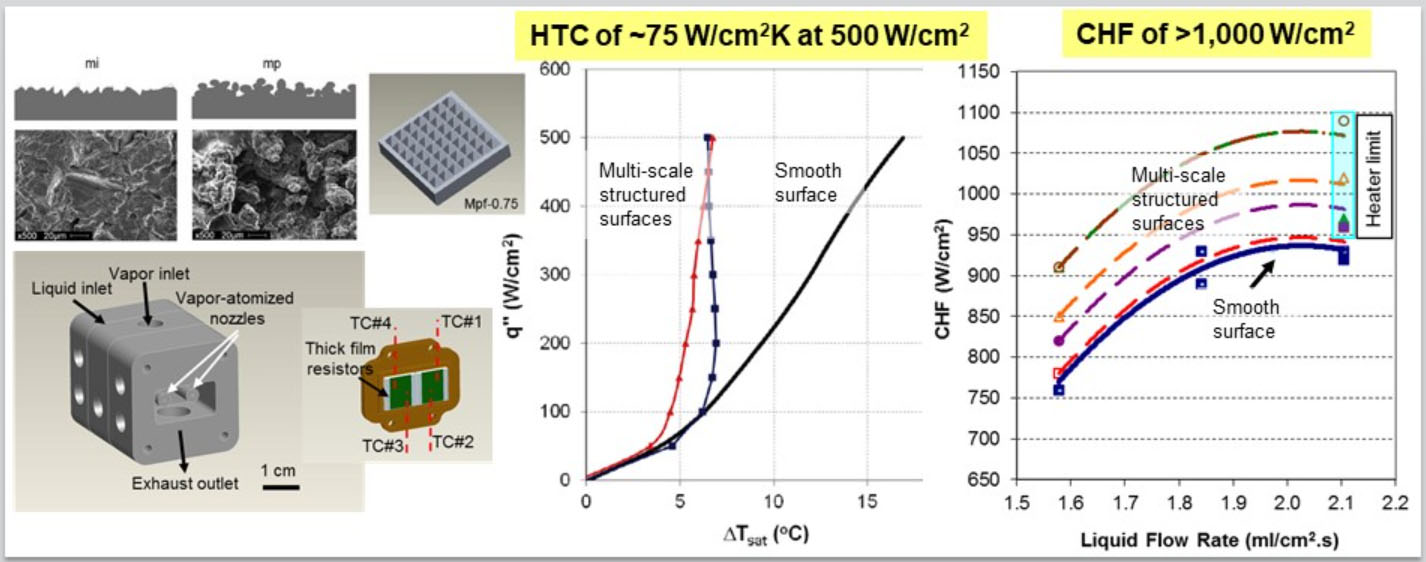
Spray Cooling Performance Comparison
- HTC (or h) values attainable with various cooling modes
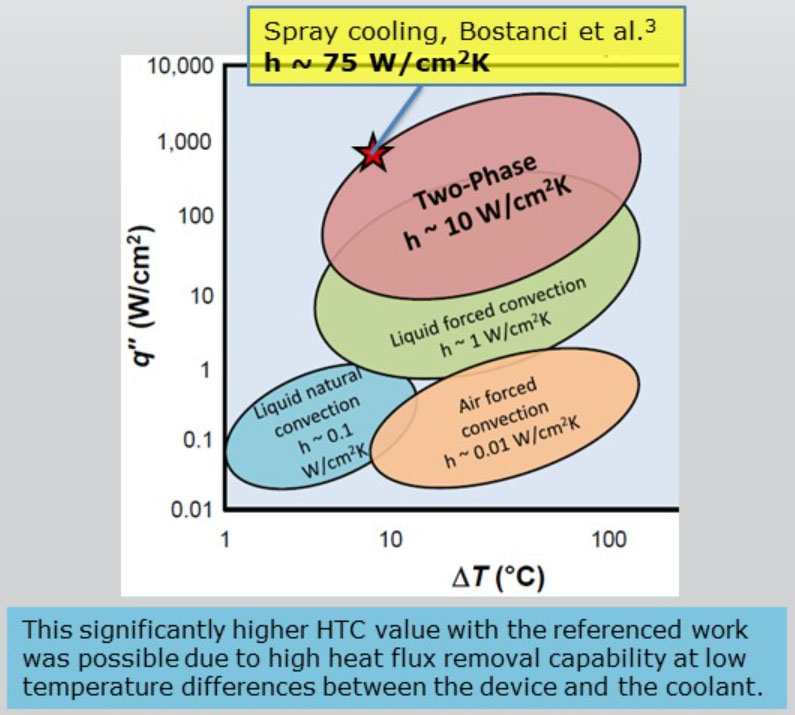
Spray Cooling for Dynamic Thermal Management
- Variable and intermittent flow spray cooling for dynamic thermal management
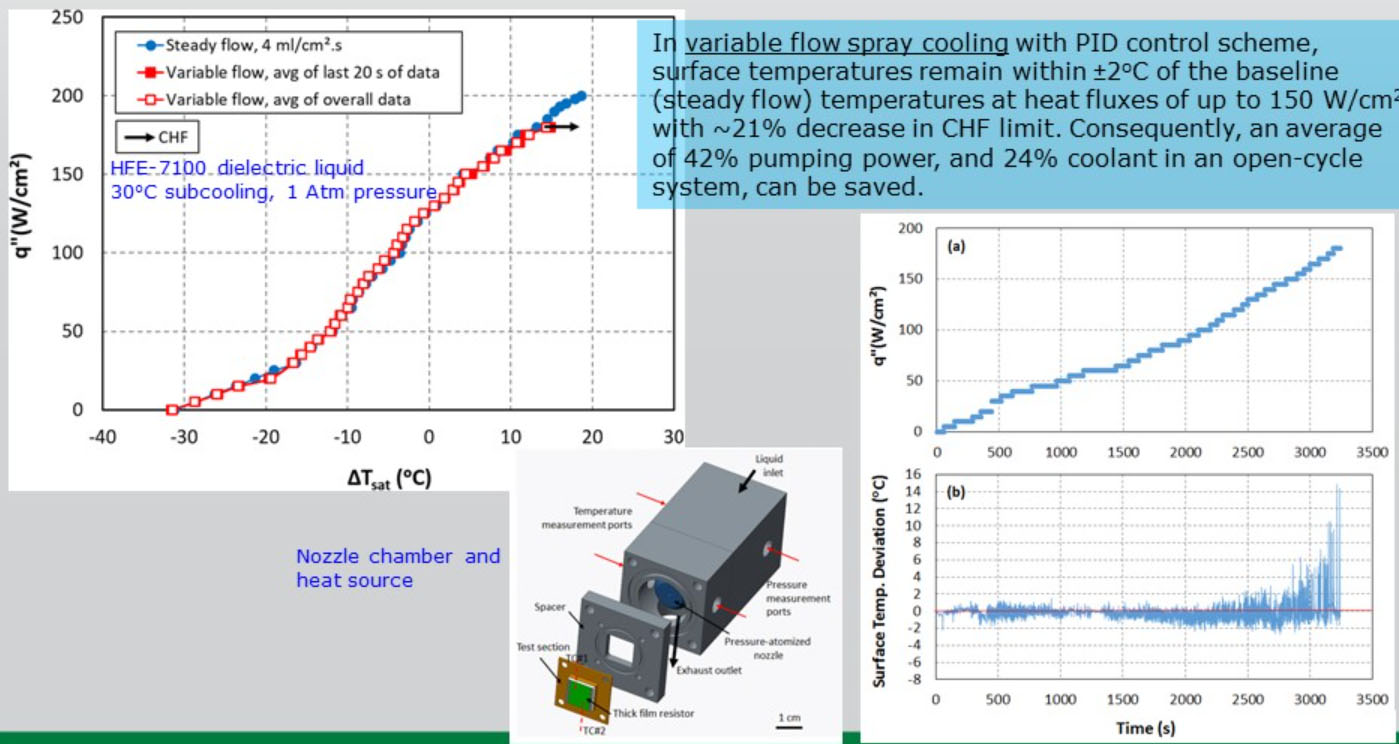
Spray Cooling with Binary Mixtures
- Two-phase spray cooling with azertrope-forming 2-propanol/water
- Binary mixtures allow tunable properties (e.g., boiing and freezing point) and thus operating for specific applications
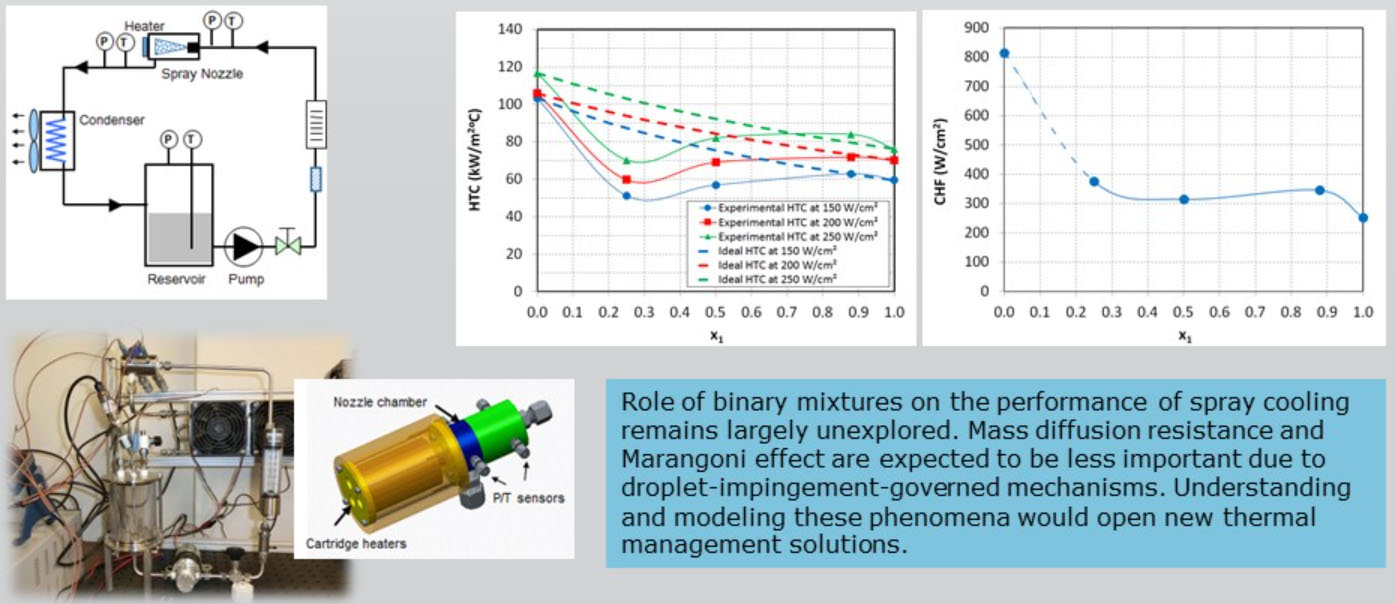
Enhanced Heat Transfer Surfaces
- Investigaion of practical, cost-effective, scalable, durable surface enhancement techniques
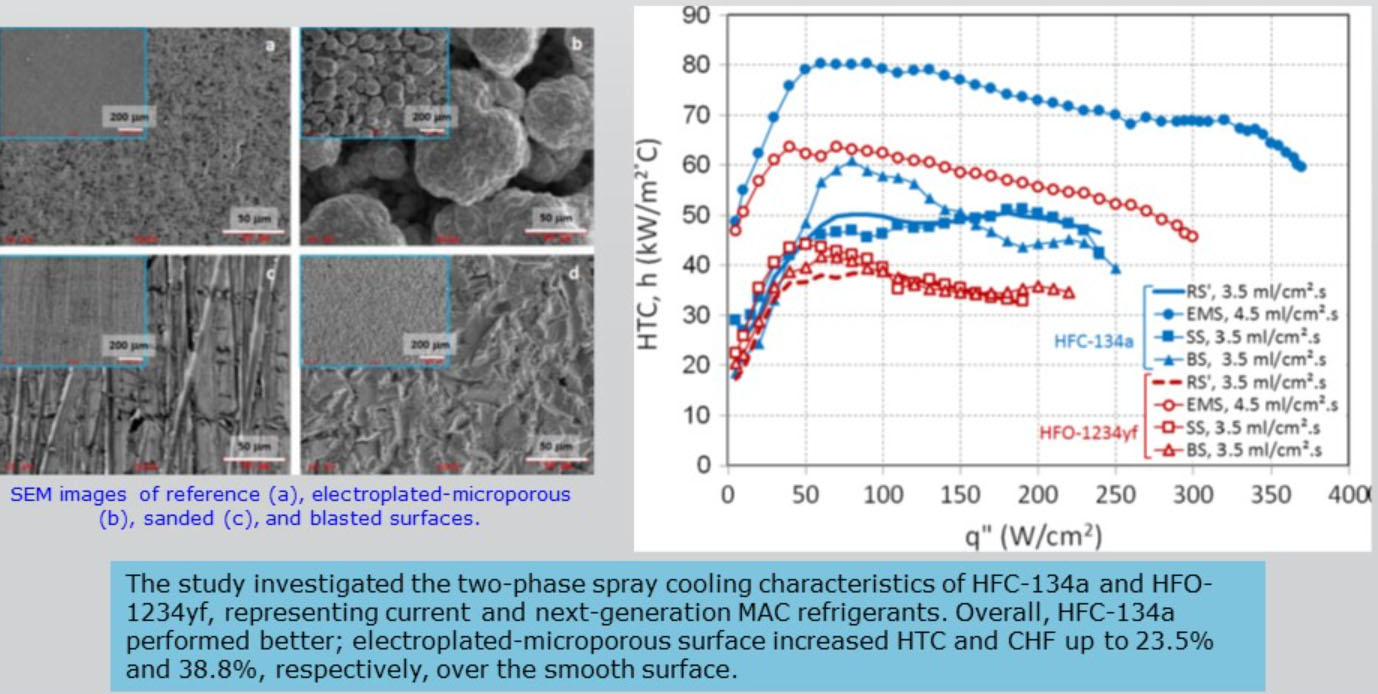
Microgravity Transport Phenomena
- The TML works on microgravity transport phenomena, mainly phase separation, and heat and mass transfer for applications in spacecraft / space habitat lif support (air revitalization) systems.
- Air revitalization is a crucial system for any space travel. Particularly, CO2 levels must be controlled in a spacecraft to prevent astronauts from experiencing hypercapnia from excess CO2.
- Due to reliability and capability gaps of the current systems (i.e., CDRA aboard the ISS), NASA has been researching on alternative CO2 removal methods that are innovative, reliable and energy efficient for future space exploration missions.
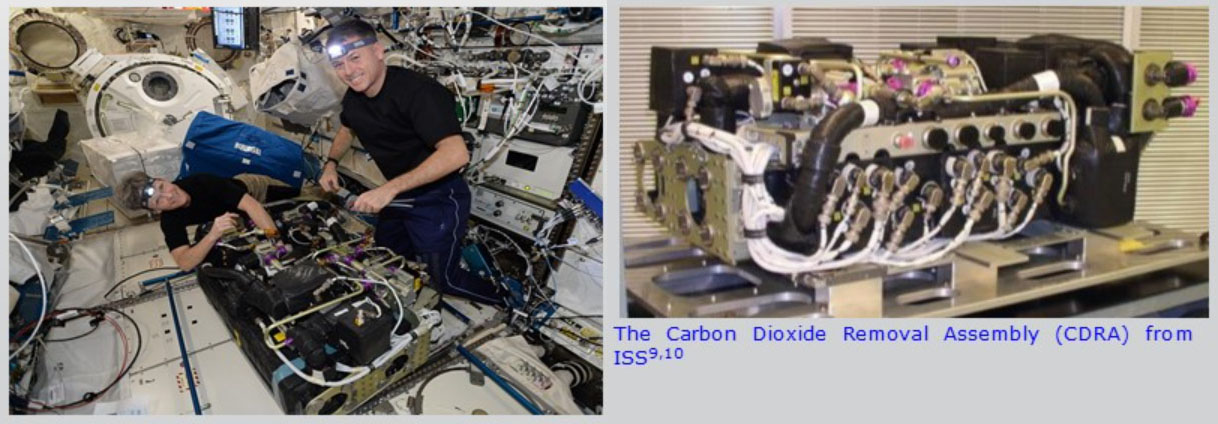
Vortex Phase Separator (VPS) for Liq. Amine CO2 Removal
- An alternative approach to remove CO2 is to use liquid sorbents (e.g., amine). However, separating the gas (air) and liquid (amine) in microgravity is challenging.
- The VPS is a gas-liquid separation device that relies on centripetal driven buoyancy forces to form a gas-liquid vortex within a fixed, right circular cylinder. If VPS utilizes liquid sorbents (e.g., amine), it can remove CO2 from cabin environments.
- This research aims to investigate and demonstrate the microgravity VPS as a reliable and high-throughput technology that can be integrated in NASA's air revitalization system for crewed space exploration and habitats missions.
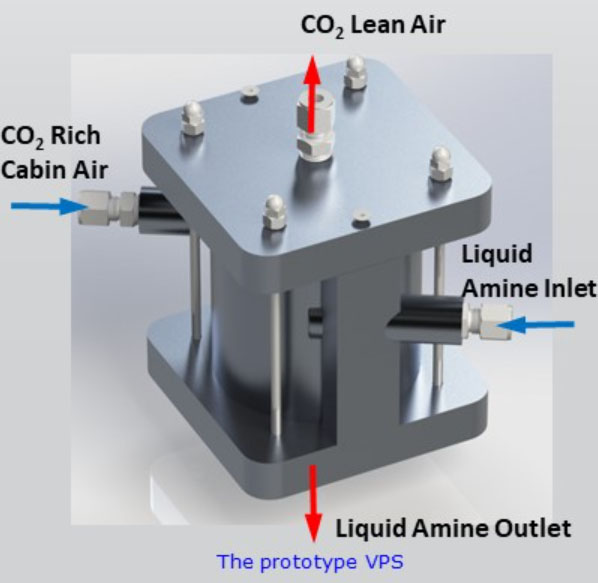
- Preliminary investigation of VPS for liquid amine CO2 removal system
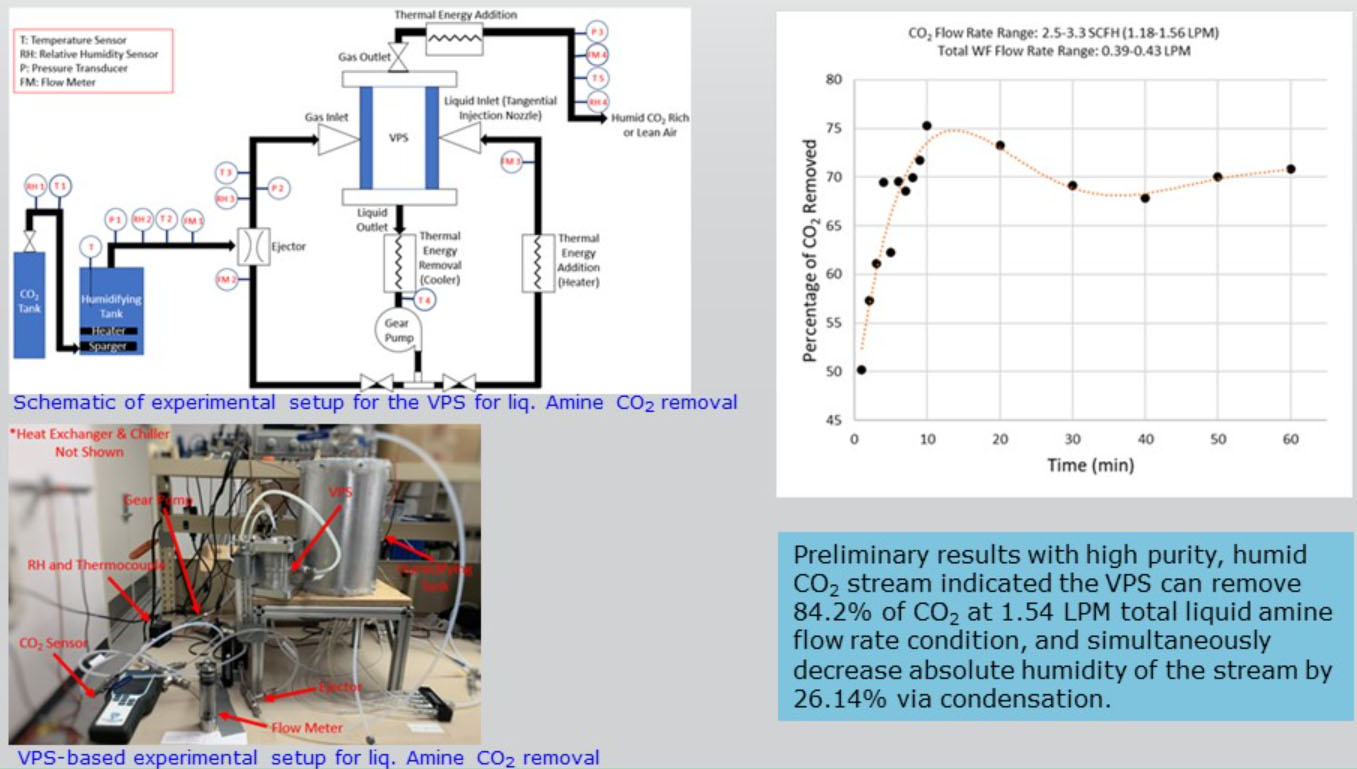
Variable Conductance Radiator (VCR) for CO2 Deposition
- Another alternative CO2 removal method is CO2 deposition using cryogenic systems. These systems operate on the fact that CO2 deposits at a higher temperature than Oxygen and Nitrogen, so CO2 can be deposited and removed from the cabin atmosphere.
- The utilization of thermal radiators is an emerging opportunity to complement or replace cryogenic coolers in an energy efficient way particularly for the deep space missions that offer very low temperature (4 K) environment.
- The VCR project aims to investigate and demonstrate thermal radiator as a successful alternative to cryocoolers for CO2 deposition method.
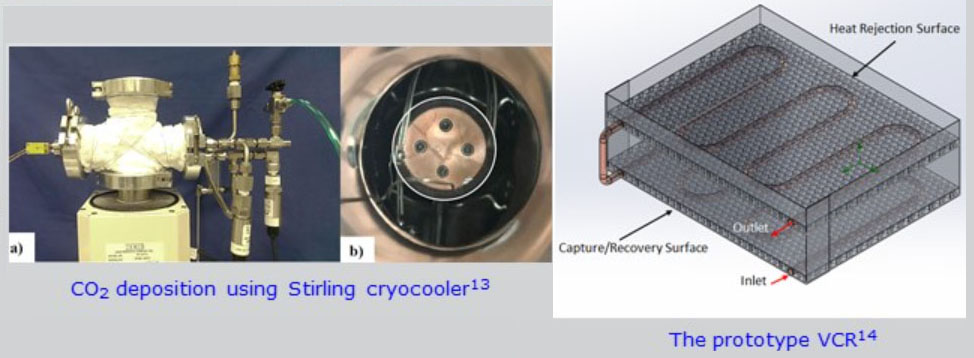
- Preliminary investigation of VCR for CO2 deposition in deep space transit
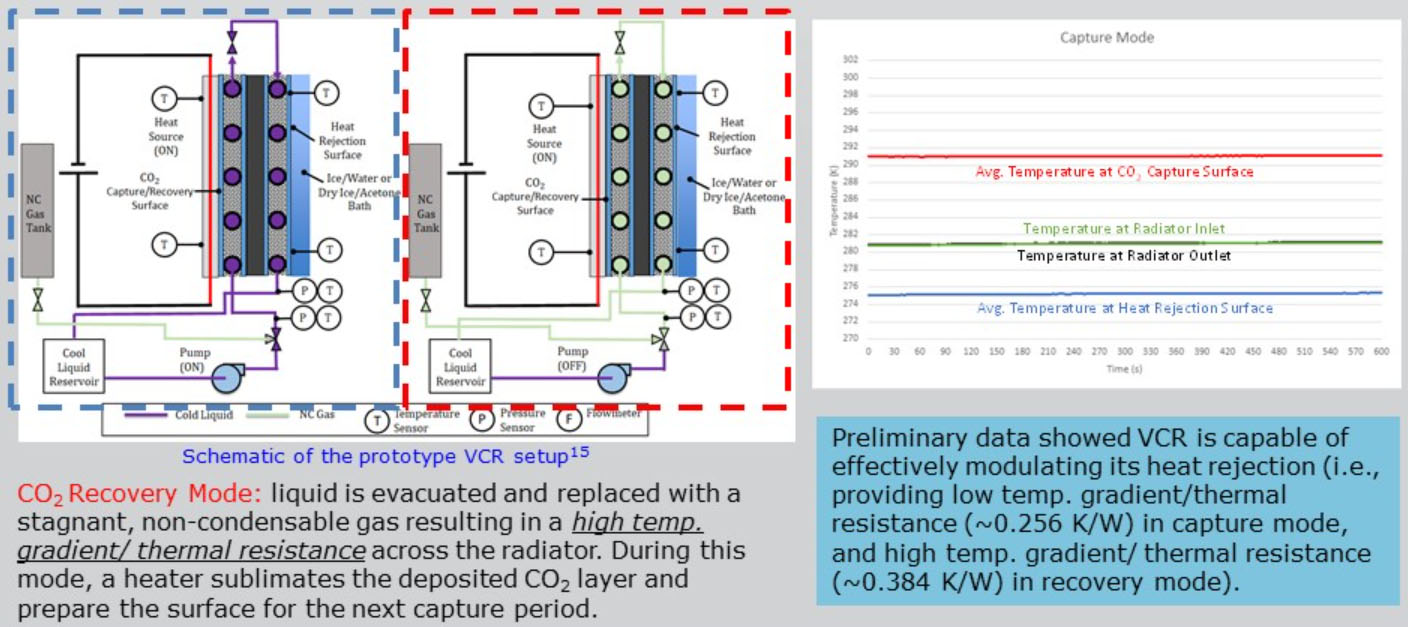
Stirling Cycle-Based Energy Conversion
- The TML aims to investigate the fundamental performance characteristics of an innovative Rotary Displacer Stirling engine (RDSE), and establish design strategies towards its realization as a highly-efficient, flexible, and clean power generator
- Current research efforts include RDSE characterization, analysis and optimization
- RDSE has a fundamentally different design with key benefits over conentional configurations
- reciprocating displacer SEs:
- reduced cycle energy needs
- reduced friction
- fewer moving parts

Rotary Displacer Stirling Engine (RDSE) - Characterization
- Experimental characterization of first operational RDSE prototype
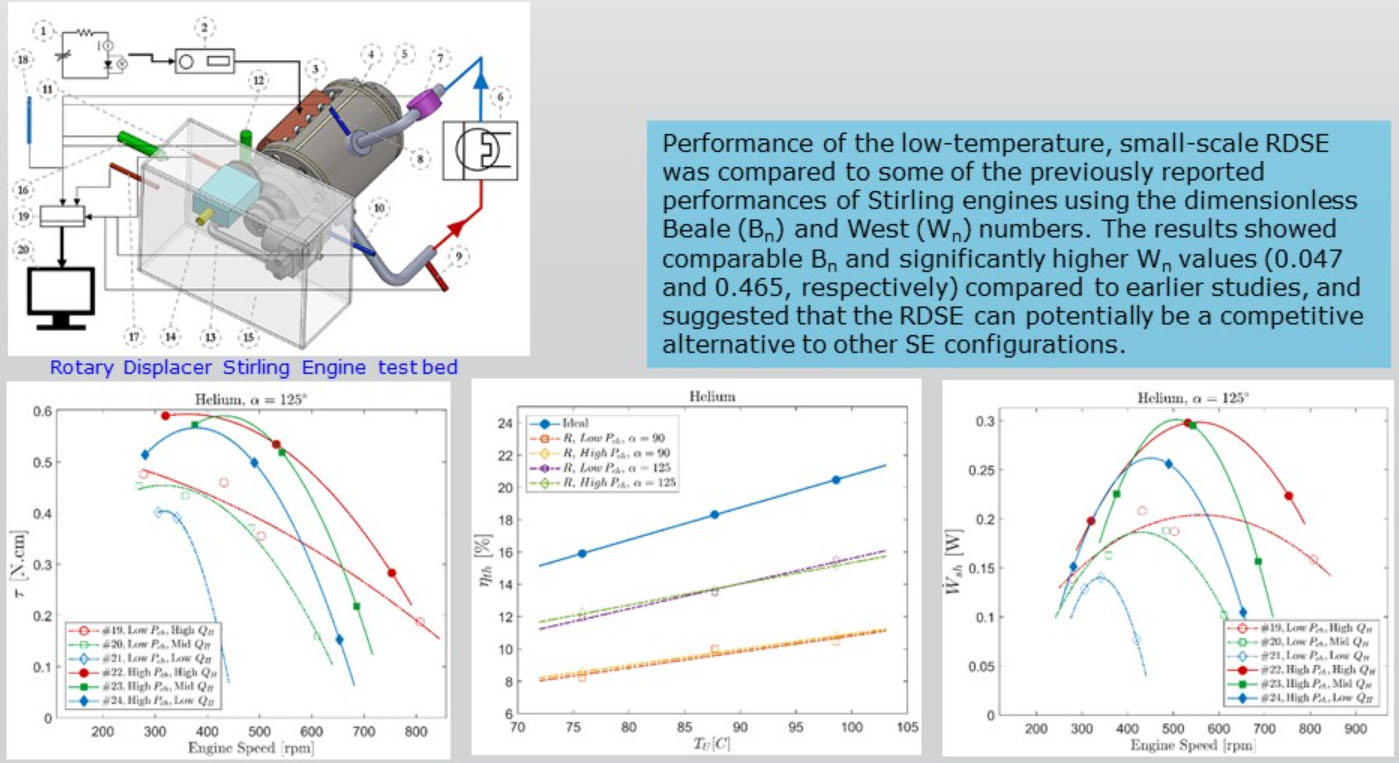
Rotary Displacer Stirling Engine (RDSE) - Analysis
- Development of analytical methods to predict engine performance
